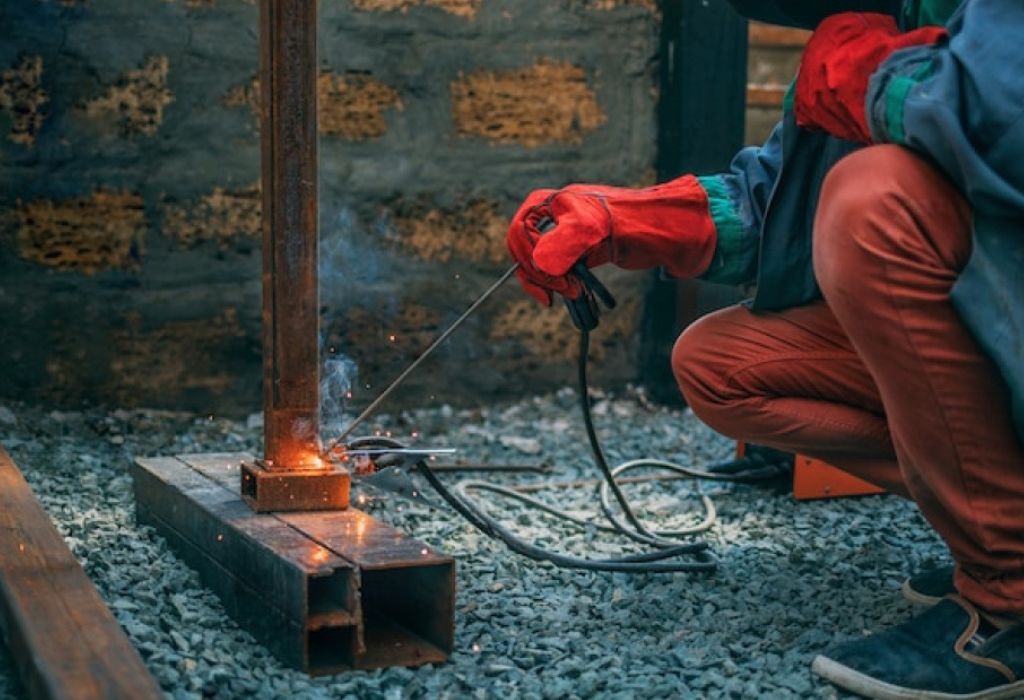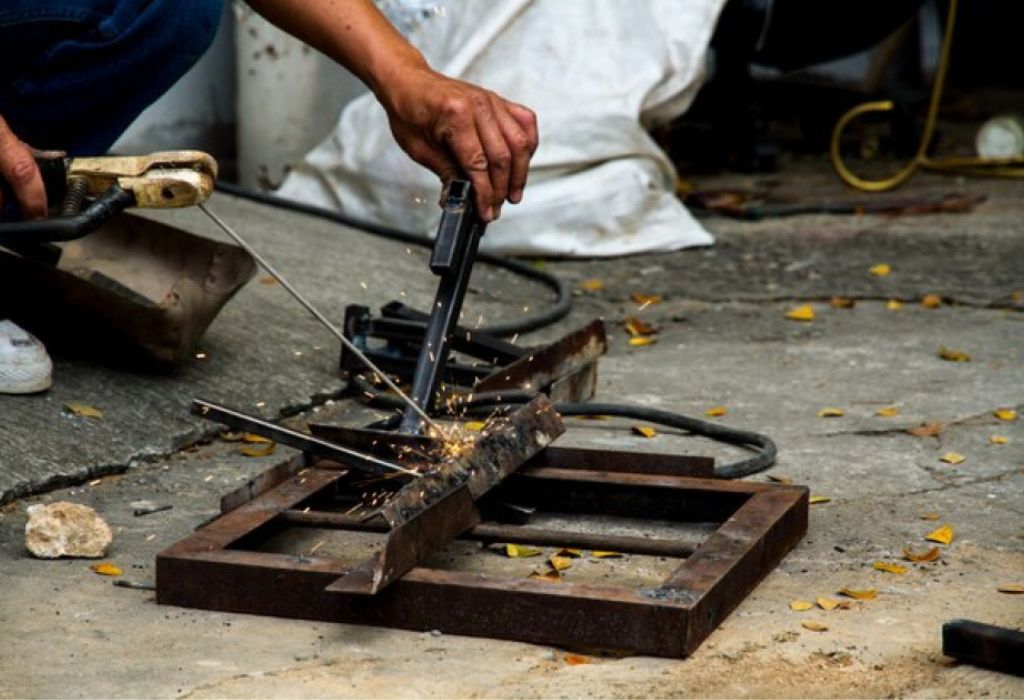A tiny crack in a cast-iron stove plate can stall a winter evening and a workshop schedule. The fast question that follows is whether a cold-weld epoxy can save the day or if real welding is the only safe route.
Epoxies promise quick, low-cost fixes with minimal tools, but cast iron is unforgiving and failures can be costly. J-B Weld Original cures in 15–24 hours, reaches ≈5,020 PSI tensile strength, and is rated to ≈550 °F, which sets practical boundaries for any repair plan. J-B Weld
High-heat repairs call for different chemistry, and J-B Weld ExtremeHeat is formulated for metal repairs in ~1,000 °F environments. This single detail often decides success or failure on exhaust and firebox parts. J-B Weld
Does this epoxy approach really work on cast iron? This guide explains when it does, when it doesn’t, and exactly how to prep, apply, and test for durable results.
Quick answers
Can epoxy be a permanent fix on cast iron? It can be long-lasting on low-stress, moderate-temperature parts, but it is not a substitute for proper welding in highly stressed or safety-critical components.
Is heat the main limiter? Yes, use Original below ~550 °F and ExtremeHeat near ~1,000 °F with realistic expectations. J-B Weld+1
Is perfect surface prep required? Absolutely, because cast iron is porous and often oily, which can sabotage adhesion.
What JB Weld Is (and What It Isn’t)

J-B Weld Original is a two-part, steel-reinforced epoxy mixed 1:1 that can be drilled, tapped, filed, and sanded after full cure. It sets in 4–6 hours, cures in 15–24 hours, and is heat-resistant to ~550 °F. J-B Weld
The brand also offers putties and ExtremeHeat, a metallic compound formulated specifically for hot zones like manifolds and fire boxes up to ~1,000 °F. J-B Weld
Common questions
Is J-B Weld a “cold weld” equal to metal welding? No, it’s a high-strength adhesive, not a fused metal joint.
Will it stick to dirty or oily iron? Not reliably; deep degreasing and abrasion are mandatory.
Is it machinable? Yes after full cure. J-B Weld
Does mix ratio matter? Yes, maintain 1:1 by volume for the Original formula. J-B Weld
When JB Weld Works Well on Cast Iron
Epoxy can perform surprisingly well when the application respects temperature and load paths. Static, non-pressurized housings, cosmetic corners, small bosses, chipped flanges, and non-safety-critical fixtures are good candidates.
Keep peak temperatures within the product rating, keep the joint in compression or shear with large bonded area, and avoid peel or bolt-clamp loads focused on the adhesive line. ExtremeHeat should be considered for hot-zone components that regularly see temperatures above the Original rating. J-B Weld
Common questions
Does JB Weld work on cast-iron cookware? Not for food-contact or heavy thermal cycling; temperatures and hygiene demands exceed the product’s sweet spot.
Will it hold a cracked machine base? Often yes if the section is lightly stressed and well keyed with a V-groove.
Is it suitable for a stove door crack? It can be for cosmetic or low-heat areas; use ExtremeHeat for firebox-side exposure. J-B Weld
When It’s Likely to Fail
Failures cluster around high heat, high stress, shock, pressurized service, and poor prep. Exhaust manifolds, turbo elbows, and firebox seams routinely exceed 600–900 °F and see brutal thermal cycling and vibration.
Even when high-temp compounds are used, service life can be limited by expansion mismatch and surface contamination. For many hot, stressed engine parts, welding, brazing, metal stitching, or outright replacement is the safer route. Miller Welds+1
Common questions
Will epoxy survive on an exhaust manifold? Original will not; ExtremeHeat can be a stop-gap and may hold for some uses, but longevity is variable. J-B Weld
Why do some repairs pop off? Heat exceeds the rating, or the joint is loaded in peel or concentrated bolt clamping.
Why do bonds fail after a few heat cycles? Thermal expansion differences and trapped oils undermine adhesion over time.
Surface Prep: The Make-or-Break Step on Cast Iron
Cast iron is porous and oil-soaked, so preparation is everything. Degrease aggressively with solvent, burn out oils if safe, and abrade to a fresh 80–120-grit tooth profile.
V-groove cracks to create keying volume, stop-drill crack tips to reduce propagation, and dry the substrate thoroughly before mixing the adhesive. These steps often decide whether a bond lasts months or minutes.
Common questions
Should the part be warmed before application? Gentle warmth helps drive out moisture and can improve wet-out; always follow label directions for the specific product. J-B Weld
How rough is rough enough? You should see consistent scratch pattern and bright, clean metal.
Can you bond over paint or rust? No, remove to clean metal first.
Choosing the Right Product: Original vs ExtremeHeat
Use J-B Weld Original for low-to-moderate temperatures and general structural fills below ~550 °F. It offers ~5,020 PSI tensile strength after a 15–24 h cure and is easy to machine. J-B Weld
Use ExtremeHeat for hot spots like manifolds, stoves, fire boxes, and furnace parts up to ~1,000 °F, with realistic expectations around duty cycle and thermal shock. J-B Weld
Common questions
Which for a wood-stove crack? ExtremeHeat for fire-side exposure; Original for cosmetic exterior areas under lower heat. J-B Weld
Can products be layered? Stick with one compatible system per the label to avoid interface weaknesses.
Is SteelStik useful? Yes for moderate-temperature, quick putty fills where shaping is needed.
Step-by-Step: Repairing a Low-Heat Crack in Cast Iron with JB Weld Original
Assess the application for temperature and load, and choose epoxy only when within spec. V-groove the crack, stop-drill its ends, and abrade a wide halo to increase bond area.
Degrease repeatedly, dry thoroughly, and mix a 1:1 batch of Original. Butter both sides, press the compound into the groove, clamp or fixture carefully, and let it cure 15–24 hours before machining or loading. J-B Weld
Common questions
How soon can it be drilled or tapped? After full cure, usually the next day. J-B Weld
What if the bond feels rubbery? Allow more time or cure in a warmer environment within the product’s guidance.
Should the repair be painted? Yes after curing and a light scuff for adhesion.
High-Heat Repairs on Cast Iron with ExtremeHeat
For manifolds, firebox seams, and stack flanges, choose ExtremeHeat and prepare even more obsessively. Clean to bare metal, remove scale, degrease, and apply a generous, well-keyed layer.
Follow the product’s set/cure procedure and bring the part into service only after a complete cure. Many users treat this as a stop-gap until welding or replacement. J-B Weld
Common questions
Is ExtremeHeat a permanent manifold fix? It can seal cracks and pinholes but is often temporary under heavy cycling.
What temperature can it handle? Around 1,000 °F when fully cured. J-B Weld
Can the engine run during cure? No, wait until full cure per the label.
Alternatives for Critical or Hot Cast-Iron Repairs
Where heat or stress is high, switch to welding, brazing, or metal stitching. Proper cast-iron welding requires preheat, controlled heat input, peening, and slow cooling to reduce cracking. Guidance from Miller highlights the need for preheating (often several hundred °F) and gradual cool-down to avoid quench cracking in cast iron. Miller Welds
Metal stitching is a cold repair technique that mechanically locks cracks without welding, avoiding heat distortion and often used when flames or high heat are undesirable. Wikipedia+1
Common questions
Which option is strongest? Proper welding or stitching generally outlasts epoxies on structural or pressure parts.
When should parts be replaced? Replace when safety, pressure containment, or legal compliance is at risk.
Troubleshooting: If a JB Weld Repair Fails

If the bond lifts or cracks, first suspect contamination or insufficient surface keying. Re-prep to bare metal, widen the bond area, and ensure the application stays within temperature limits.
Avoid loading the adhesive line in peel or concentrated clamp; redesign the joint or use mechanical reinforcement if needed.
Common questions
Why did it break when bolts were torqued? Bolt clamping focused loads into the adhesive and exceeded shear or peel capacity.
Why did it crumble after heat cycles? Thermal expansion mismatch and over-temperature service degraded the bond.
Can old epoxy be repaired over? Grind back to sound material and roughen before reapplication.
Safety, Curing, and Machining Notes
Use gloves and eye protection, work in ventilated spaces, and follow label warnings. Respect set versus full-cure times before drilling or loading to avoid micro-cracks and bond weakening. J-B Weld
Store products per manufacturer guidance and keep repairs away from open flame until cured.
Common questions
Is JB Weld food-safe for cookware interiors? Not recommended for direct food contact or high-heat cooking surfaces.
Can cured epoxy be sanded flush? Yes after full cure.
Cost, Time, and Reliability Snapshot
Epoxy repairs are fast and inexpensive, with excellent outcomes on low-stress, moderate-temperature parts. Welding, brazing, or stitching cost more and take longer but provide superior reliability for structural, pressurized, or very hot components.
Choose based on risk, function, and heat—then follow prep and cure to the letter.
Common questions
What is the most economical route for a small, cool casting? Epoxy with textbook surface prep.
What is the most reliable route for engine or pressure parts? Professional welding or stitching, or replacement where required.
Conclusion
So, does JB Weld work on cast iron? Yes, when the job fits within the product’s temperature limits, stress profile, and surface-prep requirements. Original is ideal for moderate heat and non-critical parts, and ExtremeHeat serves hot zones with realistic expectations. J-B Weld+1
For high-heat, high-load, or safety-critical components, lean toward welding, brazing, metal stitching, or replacement, and treat epoxy as a temporary stop-gap. Review the steps in this guide, choose the right material, and execute prep and cure meticulously for durable results.

I’m Darrell Julian, the founder, lead writer, and hands-on welding enthusiast behind ArcWeldingPro.com. With more than 15 years of real-world welding experience, I created this platform to share what I’ve learned in the field, in the shop, and in the heat of the arc.


